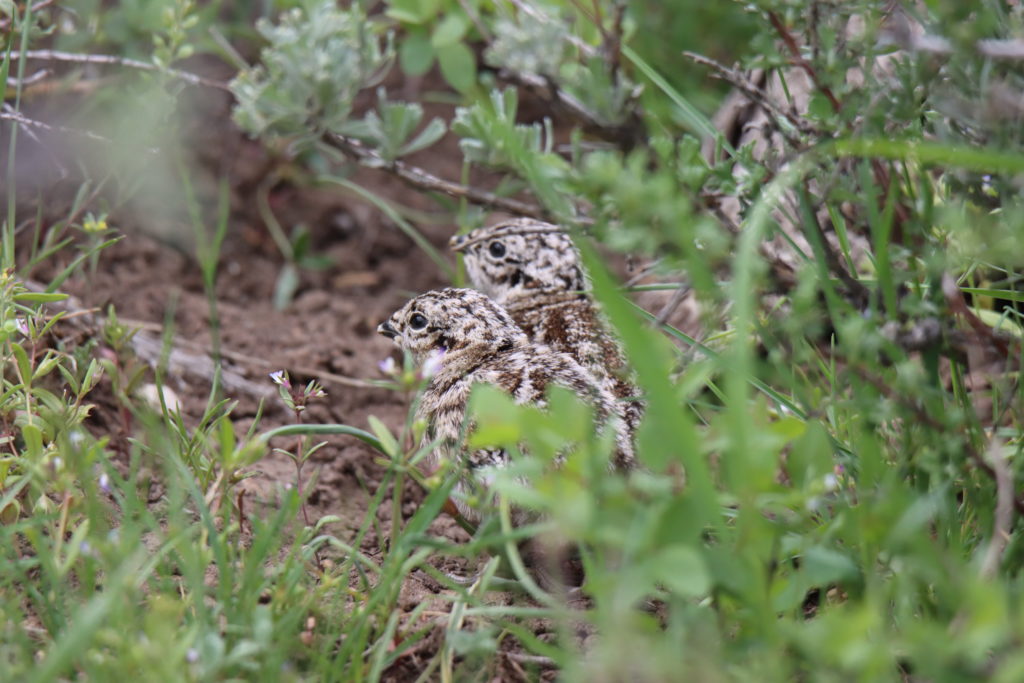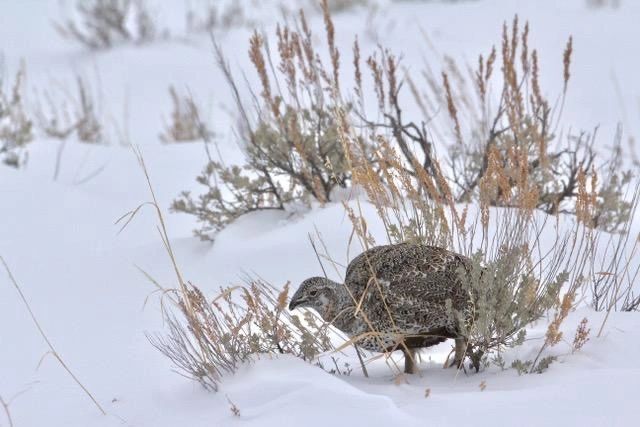By Caitlyn Wanner
This is the first summer in several years I haven’t spent doing sage-grouse research, first as a wildlife technician and then for my master’s thesis. I am as biased as can be, but I found sage-grouse to be a surprisingly arduous species to study. Many species, like ungulates and carnivores, are large enough for GPS transmitters that transmit locations via satellite, with researchers hardly needing to step a foot in the field beyond capture day. Similar transmitters can be attached to grouse but they have smaller batteries and are bulky enough to possibly affect individual survival. So, most grouse research is done the old-fashioned way, with boots on the ground, a handheld receiver, and an ear craning for the subtle beeps of a radio collar. Some years I was following my hens through the mud of spring, the blistering heat of summer, and the blizzards of winter. Being in the field alongside them, I got to know their annual cycle pretty well, and each year I learned something fascinating about sage-grouse behavior. The spring courtship dance of the males is always a sight to see, but here are a few reasons I came to love (and sometimes hated) the female sage-grouse.

Photo by Jonathan Lautenbach
First of all, some hens were a lot more difficult to track than others. Sage-grouse hens have different habitat requirements for spring (nesting), summer/fall (brood-rearing), and winter. But each hen fulfills these requirements differently. Some hens happily spend all year within the same mile area. Others may move over 60 miles between seasonal ranges, with the longest distance recorded being 150 miles away. Perhaps that’s not much for an eagle, but it’s surprisingly far for a bird that spends most of its life walking. Science has yet to figure out why individuals within populations vary so much in their movements.
Second, sage-grouse mamas are all different. Turns out, no one teaches sage-grouse about the best way to raise a family. Some hens are so dedicated they will re-nest again and again within a week of losing a nest to a predator. Other hens are not so excited about motherhood and embrace their single life after hardly an attempt. Research has shown that these two strategies have their pros and cons. Hens lose lots of energy sitting all day and night on nests, with only brief recesses in the morning and evening to eat. They are also more vulnerable to predators. Because it takes weeks for chicks to begin weak flight, mamas with broods walk everywhere with them and will feign an injured wing to draw threats away from their chicks. Hens without chicks have much higher survival, opting to save themselves and try again next year, a strategy that’s unique compared to other grouse species that live fast and die young.

Lastly, my most favorite part about sage grouse came from tracking them during the winter. Sage-grouse thrive during winter. While animals such as ungulates and coyotes struggle to survive, sage-grouse typically reach their peak annual weight eating nothing but sagebrush. Some of my favorite experiences involved tracking sage grouse the morning after a snowstorm, seemingly without any luck, until suddenly, right before my eyes, they began popping out of their snow burrows, shaking the snow from their backs, and waddling about to find breakfast. It seems the cold never bothered them anyway.
